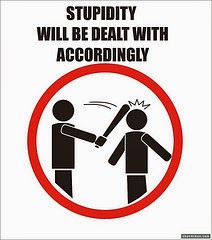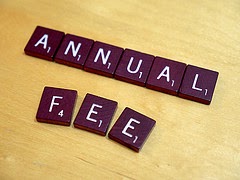I've
written before about how mutual fund fees, in the form of expense ratios, can really cost you in your 401(k). While an expense ratio of 1% or so may not seem like much, over the course of 25 to 30 years, it can cost you tens of thousands of dollars in lost returns. Look at the below table. If you have a starting balance of $25,000, get an average 7% return, and pay 0.5% in fees, after 35 years, you'll have $227,000. But look at what happens if you pay 1.5% in fees:
How Much Does That Fee Cost You?
Initial Balance
|
Average Return
|
Fee
|
After 35 years
|
$25,000
|
7%
|
0.5%
|
$227,000
|
$25,000
|
7%
|
1.5%
|
$163,000
|
That one additional percentage point in fees may not sound like much, but because it is taken out of your account every year, year after year, it ends up reducing your final total by
28%! That innocent sounding one percent fee can cost you almost one third of your retirement savings!
This is why you need to look at the fees your investments are charging you.
The impetus for writing my previous post about this came from my investigation into my company's 401(k) offerings and their expense ratios. When all was said and done, I rearranged my 401(k) funds so that I was out of the most expensive funds and tried to move most of my money into offerings that had ratios under 1%. My 401(k) doesn't have a huge selection of choices, but I think I did pretty good with what was available to me.
Recently, I received notification that one of the funds I had invested in was being removed from the 401(k) plan and replaced with another fund because the old fund did not meet the performance objectives defined by the plan. I took this as another opportunity to review the funds I was invested in. I was not looking to move money into new funds, but rather just to review my current selections and see if I should rebalance my investments among them.
I started out by listing all the funds I currently owned and their performance, as defined by their 10 year return. (Because I'm a buy and hold investor, I'm not worried about shorter term returns and I prefer to look at longer term returns to gauge performance.) I next noted the expense ratio each fund charged. And finally, I noted the amount of money I had in each fund (which isn't that much because I've only been with my current company three years).
I threw all these numbers into a spreadsheet and stared at them blankly for a while. What did this tell me? I am invested in 8 different mutual funds with expenses ranging from 0.5% to 1.31%. I can see the fee each fund charges me, but I don't really have a good idea of what I am paying in fees over my whole account. So I took the average of the fees the funds charged. In my case, that worked out to 0.82%.
But that's not the whole story. If I was invested in each fund equally, that would be the expense ratio I am paying, but I'm not invested equally. For example, I only have 5% of my balance invested in a fund that has a 1.31% expense ratio and I have 25% invested in a fund that has a 0.51% ratio. So clearly a straight average of expense ratios will not work. What I need is a
weighted average, that will give me a number based on the percentage I am invested in each fund.
To make matters more complicated, because each fund performs differently, my allocation percentage, or the way I direct my contributions be split between the funds, is not the same as how my overall account is
actually split between the funds. Some investments have more gains or losses than others, and so, over time, the actual distribution has drifted from my specified allocation percentage. (This is why you sometimes need to rebalance your portfolio once in a while.)
The first step in creating a weighted average, is to calculate the percentage of your total account a particular fund represents. This is simply the amount invested in that fund divided by the total value of your account. I did this for each fund I own, and it is shown in the screenshot below in the column labeled "% of total portfolio."
Next, I took that number for each fund and multiplied it by the fund's expense ratio. This is shown in the column "weighted % * fee".
The weighted average of the expense ratios is then found by just adding up this column. You can see that, although the average expense ratio for the funds in my 401(k) is 0.82%, what I am actually paying is 0.749%, because I am more heavily invested in funds with low ratios and less invested in funds with higher ratios.
I should note that, although I did all this manually using a spreadsheet, the website
Personal Capital will do all of this for you automagically. Personal Capital is like
Mint.com, but more geared towards investment accounts and their performance (whereas Mint is more geared toward budgeting with checking and savings accounts). I have not used Personal Capital because they do not support the company my 401(k) is with, but I learned about them from the
Listen, Money Matters podcast and
this page on their blog shows how Personal Capital does exactly what I did here manually, only with pretty graphs. They also calculate how much money those expense ratios will cost you over time.
Now that I've got my 401(k) set up with funds that have acceptable expense ratios, my next task will be to look at other funds my plan offers to see if there are any that might be better than what I am currently invested in. This will require a bit more research because it's not simply a case of finding the funds with the lowest expense ratio. I also need to take into account the fact that I want to be diversified across different investment areas. I'll post my results next week!


















